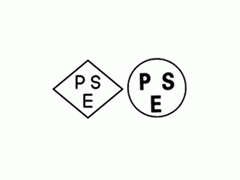Address
304 North Cardinal
St. Dorchester Center, MA 02124
Work Hours
Monday to Friday: 7AM - 7PM
Weekend: 10AM - 5PM
Address
304 North Cardinal
St. Dorchester Center, MA 02124
Work Hours
Monday to Friday: 7AM - 7PM
Weekend: 10AM - 5PM

PSE certification is a mandatory certification in Japan. Japan has released two sets of product catalogues for compulsory certification. Class A: * The electrical equipment and material products must be certified by a third-party certification body licensed by the Ministry of Economy, Trade and Industry of Japan. According to the DENAN law, the manufacturer is obliged to save the test results and certificates, and the label must have the diamond-shaped PSE mark. Category B: Other electrical equipment and material products must be certified by a third-party certification body licensed by the Ministry of Economy, Trade and Industry of Japan. According to the DENAN law, the manufacturer is obliged to save the test results and certificates, and the label must have the round PSE mark.
For different products, PSE certification requirements are also different. Divided into circular PSE certification and diamond PSE certification. There is a difference between the two. Circular PSE certification does not require factory inspection, and only needs to provide relevant technical data of samples and products to the certification body. The diamond-shaped PSE certification needs to be audited, the cycle is long, the cost is not low, and a specific organization can issue the certification. The round time is short, no factory audit is required, and the testing agency can issue the certificate by itself.
Japan’s newly promulgated “Electrical Appliances and Materials Safety Regulations” to replace the original Electric Appliances Banning Law is very complicated. Take mobile phone chargers as an example: mobile phone chargers belong to Class A products according to this regulation, and Class A products must be authorized by Japan and Testing is carried out in laboratories managed by METI. Such laboratories such as: JQA, LET, UL Apex, non-Japanese laboratories such as UL are also authorized laboratories for this type of products (by battery chargers and AC adapters). Therefore, enterprises applying for PSE certification should *choose a laboratory authorized by Japan and obtain a test report issued by the laboratory to prove that the product meets the technical requirements of Japan. Japan has two sets of technical requirements for battery chargers, and customers can choose at will:
About factory inspection Before the certificate is issued, the factory inspection will be carried out by the testing organization. The PSE logo and the logo of the testing agency are allowed to be used on battery chargers after both testing and factory inspection have met the requirements. The production products are required to be thoroughly tested. However, different products have different testing items, usually high voltage test and protective grounding continuity test. For chargers, the certificate is valid for 3 years. The regulations require that Japanese buyers must register and declare with Japan METI within one month after purchasing the goods, and must mark the buyer’s name or ID on the product for supervision and management in the future product sales process. According to the Product Material Safety Law, the responsibility for the safety of products imported into Japan rests with Japanese importers. Therefore, importers must keep test reports and inspection records. Importers can also view the inspection records through the internet.